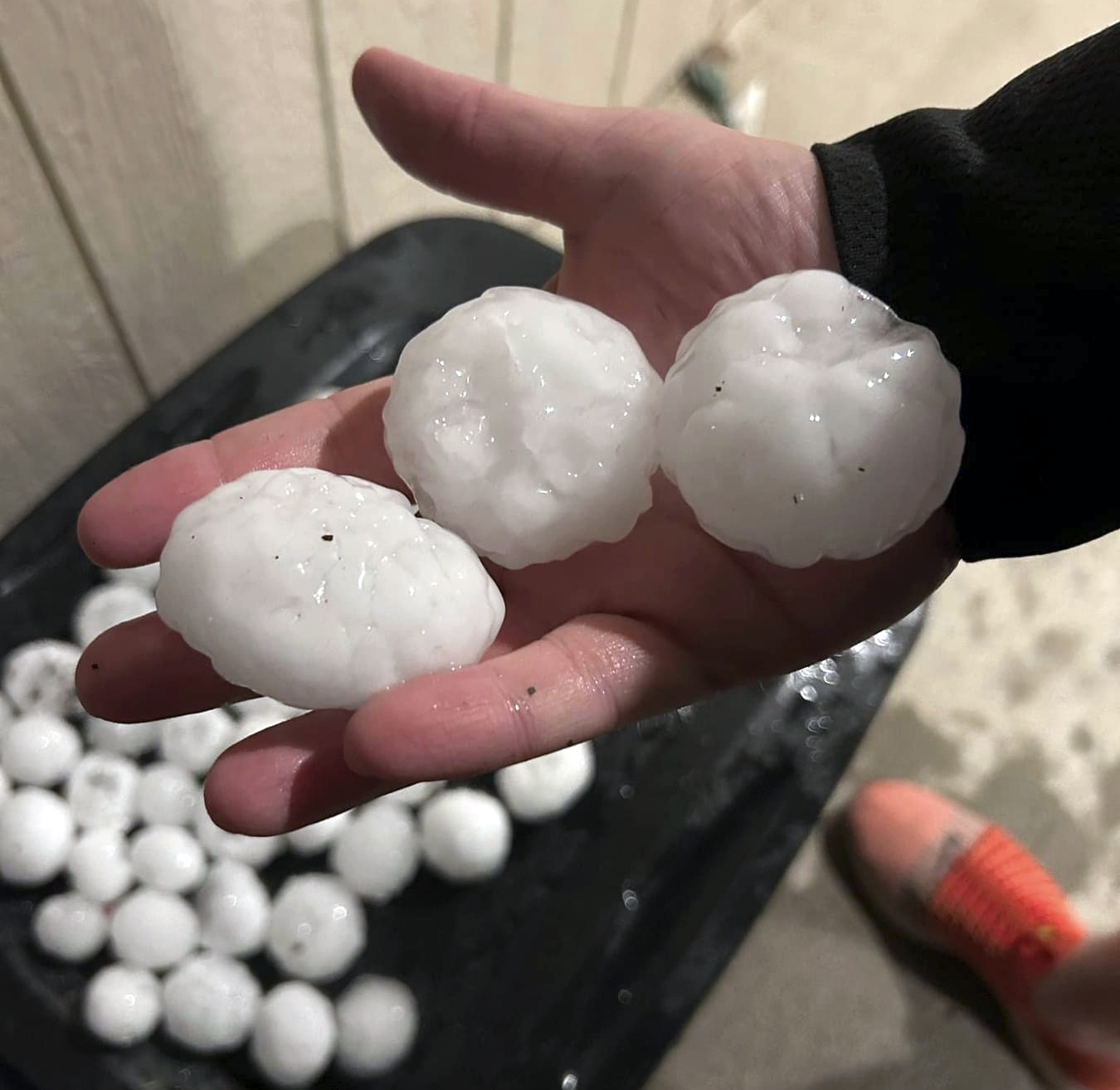
A major snowstorm has hit Colorado, closing numerous schools and government offices Thursday and shutting down sections of highways leading to the Denver area as meteorologists warned of difficult to nearly impossible travel.
“Our city hasn’t seen a storm like this in a few years,” Denver Mayor Mike Johnston posted Wednesday on X, formerly known as Twitter.
The storm, which began Wednesday night, wasn’t expected to wind down until Friday. The heaviest snow accumulations were expected in the Front Range Mountains and Foothills, with a large area expected to get 18 to 36 inches (45 to 91 centimeters), and some amounts exceeding 4 feet (1.2 meters), the National Weather Service said.
Sections of Interstate 70 were closed in the Colorado mountains.
“Huge flakes coming down hard,” the weather service’s office in Boulder posted on social media early Thursday.
The storm started as rain in the Denver area and turned into snow. The area was expected to get 10 to 20 inches (25 to 50 centimeters) of snow, with up to 2 feet (60 centimeters) in the western suburbs, the weather service said.
Denver deployed 36 residential plows starting at 3 a.m. Thursday with the plan to shave the top few inches of snow off streets, to help clear paths to main streets.
Denver International Airport was open early Thursday, but at least several hundred flights to and from there were canceled or delayed, according to Flightaware.com.
The snowstorm comes as other parts of the country face severe weather. Massive chunks of hail pelted parts of Kansas and Missouri on Wednesday night, with storms unleashing a possible tornado in Kansas.
Also, massive chunks of hail pelted parts of Kansas and Missouri on Wednesday night, bringing traffic to a standstill along Interstate 70, as storms unleashed possible tornadoes and meteorologists urged residents to stay indoors.
There were three unconfirmed reports of tornadoes in Wabaunsee and Shawnee counties with reports of damaged structures, but no reports of injuries or homes damaged, according to meteorologist Matt Wolters with the National Weather Service’s Topeka office. Survey teams plan to head out Thursday to evaluate the damage, he said.
There were reports of 4-inch (10-centimeter) hail, nearly softball-size, in the town of Wabaunsee and 3-inch (7.6-centimeter) hail in Geary County near Junction City and Fort Riley, Wolters said.
Descriptions of the hail ranged from the size of golf balls and apples, to softballs and baseballs.
Alex Sosnowski, senior meteorologist at AccuWeather, previously said the predicted hail was deemed “gorilla hail” because it had the potential to be so big.
“Gorilla hail” is a term coined by Reed Timmer, a storm chaser who calls himself an extreme meteorologist, Sosnowski said. In this case, the term might fit: Some hail from north-central Kansas into north-central Missouri could be as big as a baseball.
“When you get up to tennis ball, baseball-sized or God forbid softball-sized, that can do a tremendous amount of damage, and if you get hit in the head, that could be fatal,” Sosnowski said.
Traffic came to a standstill for a time on part of Interstate 70 because of the falling hail, the National Weather Service said on X. Images of large hail chunks and at least one cracked windshield were shown on KSHB-TV.
Late Wednesday, forecasters issued tornado warnings in the areas around Topeka and to the north, while severe thunderstorm warnings were issued northeast of Kansas City in Missouri.
“If you are in this warning, get away from windows and shelter inside now!!!” the National Weather Service posted on X, formerly known as Twitter. The weather service said the storm had previously produced “softball-sized hail,” or 3.5-inch (8.9-centimeter) chunks.
The weather service also issued a severe thunderstorm watch for parts of Illinois, Iowa, Missouri and Kansas through Thursday morning, after which forecasters said the storm will move to the east.
While the hail threat lessens Thursday, meteorologists said heavy rain and high winds were still possible from northeastern Texas through central Missouri.
The biggest threat on Friday is for torrential rain — perhaps up to 4 inches (10 centimeters) in some spots — in a line from central Louisiana up through central Arkansas, Sosnowski said.
Other parts of the country also were seeing severe weather. A major snowstorm hit Colorado starting Wednesday night, closing numerous schools and government offices and shutting down sections of highways leading to the Denver area. That storm wasn’t expected to wind down until Friday.